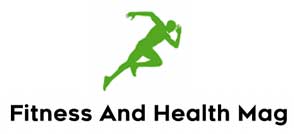Regular physical activity such as walking or running helps to improve the quality of life. This habit brings even greater benefits if, in parallel, an ideal and balanced healthy eating is adopted, including foods that provide the necessary nutrients required by the body.
Generally, foods are divided into energy, builders, and regulators. Energetics are responsible for providing power for the performance of daily activities. Bread, potatoes, rice, pasta, and sugar are some carbohydrate sources, while fats can be found in olive oil, soy oils, flaxseeds, creamy margarine, chestnuts, avocados, etc.
Excess consumption can lead to weight gain and increased abdominal fat. Builders provide proteins, which can be found in foods of animal origin (meat, chicken, fish, eggs, milk, and derivatives). They are responsible for constructing cells and tissues, acting in the organism’s growth, development, renewal, and recovery.
Regulators in fruits and vegetables provide vitamins, minerals, and fibers, which control the body’s functions, act as mediators of chemical reactions, and properly functioning organs such as the intestine.
For a complete meal, it is necessary to consume foods that are sources of proteins, carbohydrates, fats, vitamins, minerals, and fiber. Try to combine a representative of each food group in the same meal to have an ideal healthy diet.
Nutritionists recommend a series of foods for those who practice running, swimming, or cycling. They are common but are considered athlete food.
Exaggerated? And Now, What To Do?
Almost every time we make a mistake in our diet, there is a feeling of guilt and a desire to try to make up for the mistake. When the error is not a mistake but a period of error (like Carnival), this desire is almost uncontrollable, and then we make the next mistake: we drastically reduce what we eat.
Our body is a fantastic machine with incredible functioning and protection mechanisms. But sometimes, we seem to forget that. Our need for energy is constant because we are, all the time, using power. We expend energy to breathe, eat (and absorb what we eat), perform physical activities, think, read a book, and sleep. Even to watch television, we spend energy (little, but we do). This is why we have several ways to obtain power and never use only one source. We never use carbs or fat as an energy source; we always use carbs AND fat as an energy source.
We have three ways to get carbs: food, glycogen stores, and breaking down muscle mass to “build” carbs. This last process, known as gluconeogenesis, results in loss of muscle mass, reduced basal energy expenditure, and increased production of hormones that make you feel hungry. It only happens after we use up all the carbohydrates we eat or all our glycogen reserves (which occurs in about 3 to 4 hours without ingesting carbohydrates, hence the recommendation to eat every 3 hours).
After long overeating, the energy absorbed and “leftover” will be stored as fat. Despite increasing our fat reserve, this does not mean that the body will reduce what carbohydrates it uses to start using more fat. That is, the need for carbohydrate intake will remain the same. If we choose not to give these carbohydrates to our bodies, it will take care of getting them another way. And at a given time, this will be the gluconeogenesis causing loss of muscle mass.
Conclusion
Thus, the only way to correct or “compensate” for an error (or a period of mistakes) is to return to a balanced diet as soon as possible. Excess cannot be corrected with excessive restrictions but with balance.
Food must be thought of individually and according to the needs and goals of each person, taking into account that the variety, the time of food intake, and the quality of what we eat can help a lot to improve the nutrition.
ALSO READ: FIVE TIPS TO MAKE YOUR ROUTINE HEALTHIER
